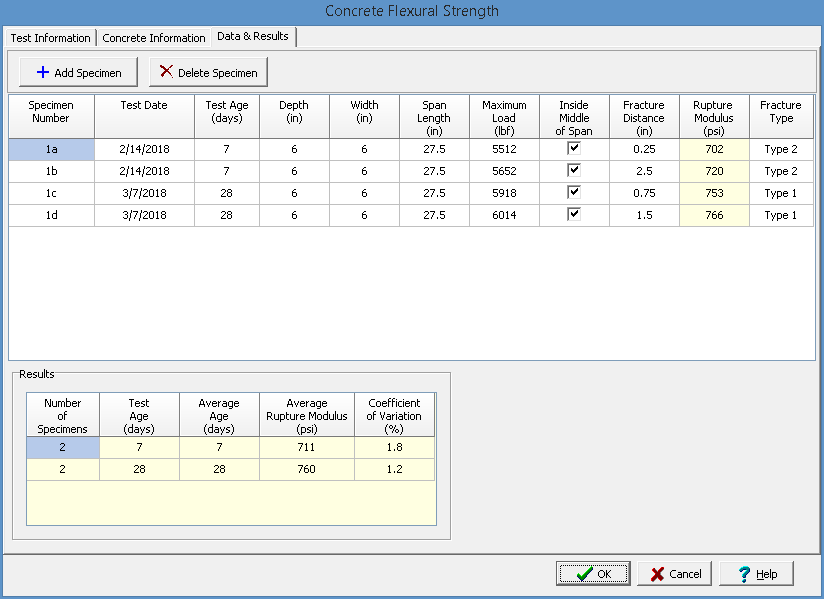|
<< Click to Display Table of Contents >> Data & Results Tab |
  
|
|
<< Click to Display Table of Contents >> Data & Results Tab |
  
|
This tab is used to specify the data and results of the test.

The following can be entered and displayed on this tab:
Data
Specimens can be added and deleted using the Add Specimen and Delete Specimen buttons. The measurements for each specimen may consist of the information below depending on the options selected on the previous tab.
Specimen Number: This used to specify the specimen number. The second and subsequent specimen numbers will be automatically determined from the previous specimen number.
Test Date: If the Specify Dates on the previous tab is selected, this is used to specify the test date.
Test Age: This is used to select the test age from the predefined list of test ages.
Depth: This is the depth of the specimen.
Width: This is the width of the specimen.
Span Length: This is the span length of the specimen.
Maximum Load: This is used to specify the maximum load before failure.
Inside Middle of Span: Check this box to indicate that the fracture occurred within the middle third of the span length.
Fracture Distance: This is used to specify the average distance between the line of fracture and the nearest support measured on the tension surface of the specimen.
Rupture Modulus: This is the calculated rupture modulus.
Fracture Type: This is used to select the type of fracture from a predefined list of fracture types. When it is clicked on it can be selected from a list of fracture types and symbols.
Results
For each of the test ages specified in the previous section, the flexural strength results will be calculated as described below.
Number of Specimens: This is the number of specimens that were tested for the specified test age.
Test Age: This is the specified test age from the previous section.
Average Age: This is the average test age of the specimens. It is calculated by subtracting the pour date from the test date.
Average Rupture Modulus: This is the average rupture modulus of the specimens.
Coefficient of Variation: This is the calculated coefficient of variation of the flexural strengths for the test age.